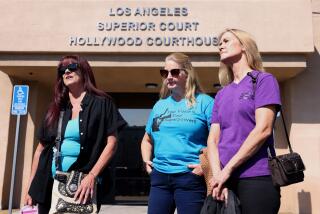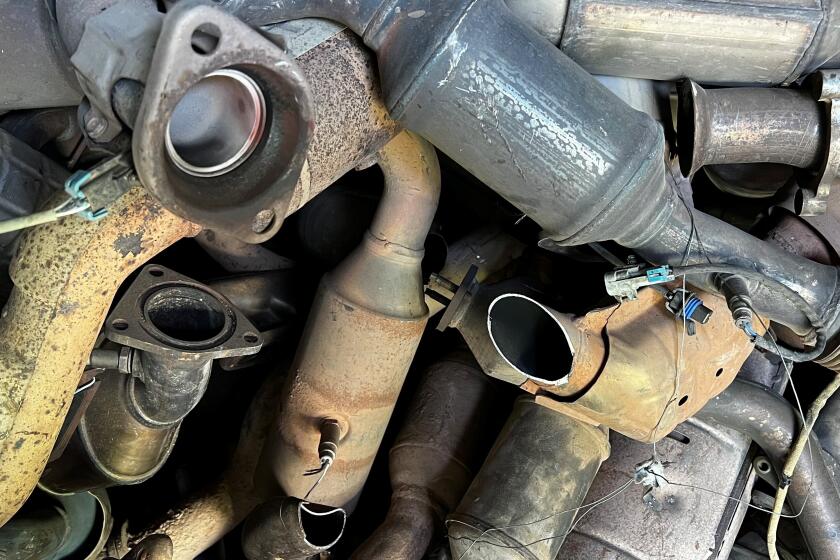Sexual Abuse Center Will Be No Cure-All
- Share via
Recently The Times printed several articles about the difficulty in obtaining a forensic exam on a sexually assaulted 4-year-old in Lancaster. Unfortunately, getting a child examined for an acute sexual assault is almost impossible in some areas of Los Angeles County. The situation is not much better for adult victims: They and police may have to go emergency-room shopping to get an evidence collection exam done.
In recent years, other communities across the country have developed SARTs (Sexual Assault Response Teams), most using SANEs (Sexual Assault Nurse Examiners) to perform forensic exams and to keep costs down. They have integrated their efforts with police and prosecutors to convict sexual perpetrators.
Most children in Los Angeles County are taken by law enforcement to County-USC, Childrens, Harbor-UCLA or Stuart House in Santa Monica for these exams. These specialized centers are excellent and have many years’ experience, especially in the area of chronic sexual abuse. However, they are not convenient for acute forensic exams, for the victim or law enforcement.
Even in the San Fernando Valley, where I live and have practiced emergency medicine for 12 years, this is a problem. In the past, when a child was brought to Northridge Hospital Medical Center’s Emergency Department, we did not have the experience, equipment or patience to do these exams. We had to make phone calls to find someone to examine a child; we did examine adults, but usually grudgingly.
Most hospitals and physicians avoid sexual assault exams whenever possible because they require specialized training and equipment, extensive documentation, are low reimbursement, can adversely impact a busy emergency department and may require a court appearance on your day off.
Two years ago, I decided to do something about this for our community and law enforcement. I obtained specialized training in child sexual assault exams and purchased equipment to do the exams in our department. I have made myself available all hours of the day or night to examine sexual assault victims, both adults and children.
Since then I have performed about 350 exams, speeding up the process for the victim and law enforcement. (I still refer children who are victims of suspected chronic sexual abuse to the specialized centers.) I have met with LAPD sex crime detectives every month to coordinate our effort with their needs.
Northridge has been able to provide this service despite low reimbursement from the city. Recently, we received $250,000 over three years from the Weingart Foundation to expand our effort. Our plan was to develop a center for victims of sexual assault of all ages using the SANE concept. However, before announcing this to the media, we wanted to have funding in place to support the project.
Last month, the Assembly approved $500,000 for a victims response center in another area of the Valley. The bill, sponsored by Assemblyman Richard Katz (D-Sylmar), proposed a one-stop shopping center for victims of domestic violence, sexual assault and child abuse.
This bill was too broad in scope and not practical. More important, once the money was approved in the state budget, the measure was amended to designate a specific hospital in Panorama City as recipient of the entire appropriation.
It’s unfortunate that Valley community leaders and others (such as representatives of local hospitals and citizen groups) interested in sexual abuse issues were not allowed to participate in this process. Instead of building on a program already in existence, it was decided to reinvent the wheel and start from scratch. Is this the best way to spend tax dollars wisely?
Usually, when large sums of money are appropriated for a project, interested parties apply and it is then awarded based on experience, costs and other factors. No one else had the opportunity to apply for this money.
I agree that the Valley needs a centralized place to do sexual assault exams. But victims of domestic violence will continue to go to their local ER or private physician, and no one will bring a child to a specialized center and admit that they have abused him. Diagnosing child abuse requires much experience and constant scrutiny, since many victims cannot tell their story.
You may say: Great, now we have two centers in the Valley to examine victims. Last year there were more than 400 adult sexual assaults reported in the Valley, averaging about one exam per day. Having more centers dilutes the experience for examiners who must maintain their skills. Also, it is unclear whether examiners at the proposed center will be trained to examine children, and whether the Northridge program will continue to handle sexual assault victims at all. (Until the designated center is up and running, we will continue to provide this service.)
Twelve years ago, trauma centers were in vogue, and hospitals scrambled for the designation. Now many have dropped it because of poor reimbursement. Currently SARTs are in vogue. Will they go through this same cycle?
More to Read
Sign up for Essential California
The most important California stories and recommendations in your inbox every morning.
You may occasionally receive promotional content from the Los Angeles Times.










